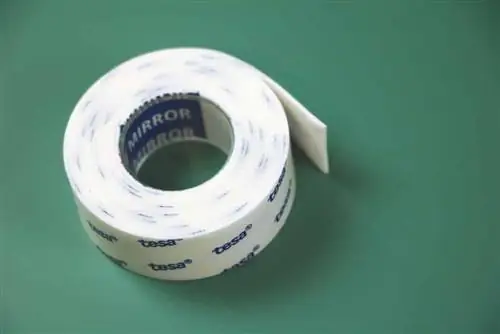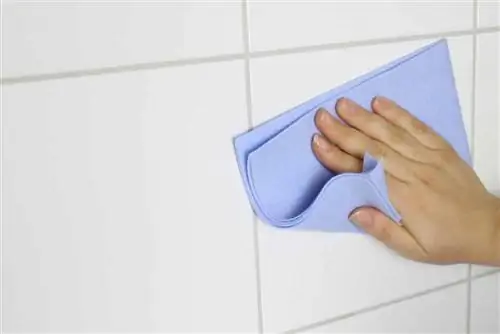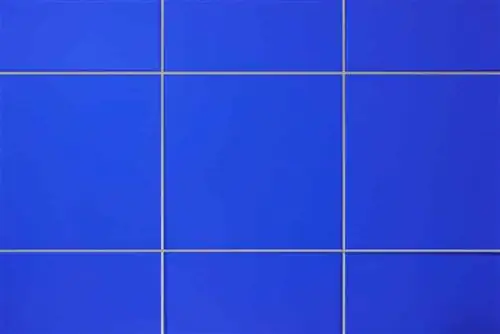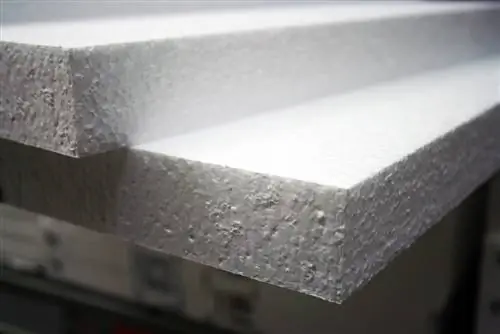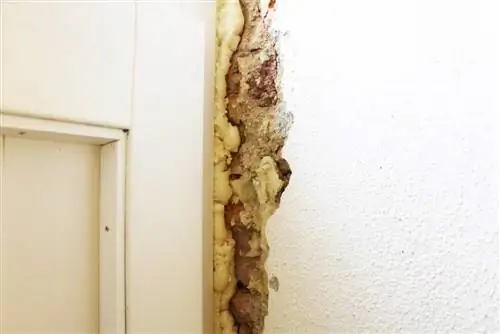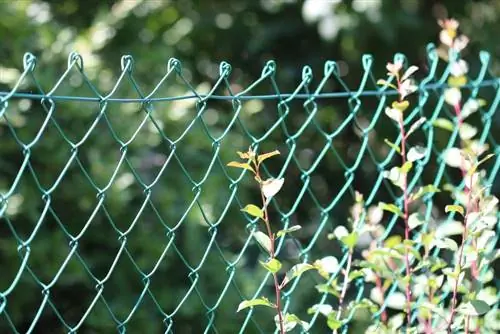- Author admin [email protected].
- Public 2023-12-17 03:39.
- Last modified 2025-01-24 12:45.
Whether it's about moving into a new home or purchasing used "favorite pieces" - we are always struggling with residues of furniture and other equipment from previous uses. This is particularly annoying with mirror tape. With our help, you can remove unwanted residues safely and completely. This means that nothing stands in the way of reusing your mirror without any damage or difficulty.
Why mirror tape at all?
Mounting tape is now one of the absolute standards for attaching mirrors. But why is that even the case? Couldn't the annoying removal of the adhesive tape have been avoided from the outset using other installation methods?
In fact, you can of course mount a mirror in the classic way with a frame, using glued-on hooks, or even using drilled holes. However, it is not for nothing that gluing has established itself as the standard. Because it impresses with various elementary advantages:
- Minimum installation height of the adhesive tape
- Almost flush installation possible
- 100% invisible mounting variant
- No risk of damage due to excessive tightening torque of screws
- Optically can be combined as desired, as there are no visible supporting parts
These variants are available
If you have to deal with the question of how to remove mirror tape, it was already decided a long time ago that gluing would be an adequate method. So that you can choose your practical steps for removing the glue correctly, you should now know the different types of glueing:
1. Assembly line
- universally applicable, heavy-duty adhesive tape
- not specifically designed for mirror mounting
- BUT: used many times due to the extreme holding collar
- no special focus on resolvability
2. Assembly adhesive
- multi-use adhesive in cartridge form
- high-strength
- BUT: not designed for easy removal
- not aimed at typical installation surfaces of tiles/wallpaper
3. Special mirror adhesive tape (e.g. Powerbond)
- developed and optimized to meet the requirements of mirror assembly
- high area performance
- Removable when removed or relocated without damaging the reflective layer on the back of the glass
4. Mirror glue
- pasty assembly adhesive aimed at mirror assembly
- Insert form usually cartridges
- optimized for mounting surfaces tiles, wallpaper, glass
- Sufficient load capacity provided across the area
- aimed at good removability
Different paths to the goal
Since the adhesives presented all have comparable components in terms of their basic nature, the possible ways to remove them differ primarily in terms of the amount of work and success:
Preparatory work

With a few tricks you can make the work a little easier or even skip it altogether.
string
You can also remove a lot of adhesive tape with a thin, tear-resistant cord (yarn or dental floss). This method is carried out like using dental floss: you wrap both ends around your fingers and move the thread like a saw. With this technique you can remove the mirror from the wall and remove a lot of material from the mirror tape.
hairdryer
The heat softens the adhesive and can sometimes even be removed completely. This technique can also be used to support mechanical removal.
Mechanical disposal
First of all, glue or adhesive tape can also be removed from its surface, i.e. the back of the mirror, mechanically. Possible tools for this can be:
- Scraper (hob scraper)
- Spatula
- Wide Slotted Screwdriver
The only important thing is that the tools you choose have a sharp, straight edge and no corners, hooks, nicks, etc.available. Otherwise these can damage the coating of the mirror. The result would be a dark scratch that is clearly visible on the front. The mirror effect is no longer present at this point.
Tip:
Ideally choose an aid made of plastic. Hard plastics offer comparable resistance to metal tools, but they are far less likely to damage the coating underneath the adhesive.
Instructions
- Place the scraper parallel to the surface and apply light pressure at the transition between the mirror and the adhesive
- Keep the working angle flat to prevent excessive stress on the coating
- Push the tool forward with even pressure
- Avoid working in spurts or approaches with the tool corners (!)
- Apply the working method carefully at first, gradually increase the amount of effort if necessary
- If the work is incomplete, proceed in several steps and remove adhesive residue in layers
- If there are lubricating residues, stop mechanical work and choose chemical alternatives
Common errors
- Tilting the tool
- Unclean or damaged scrapers
- Excessive workload, e.g. by attempting to remove smearing adhesive residue
- Tool attachment angle too steep
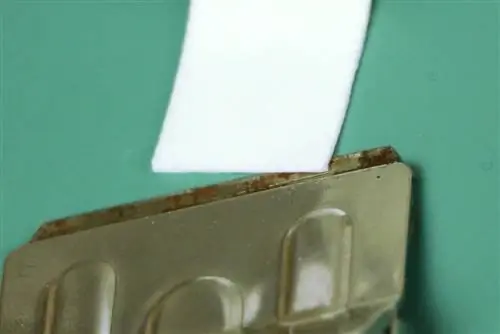
Chemical Aids
The second way to effectively remove mirror glue is to use chemical tools. Of course, this includes the obvious label or adhesive removers developed specifically for this task. But less specific means can also be summarized in the broadest sense under the term chemical removal:
- Cleaning gasoline
- Acetone (high purity solvent)
- Soap solution, e.g. all-purpose cleaner or dishwashing liquid
It is important that the chosen agents are used in accordance with the manufacturer's instructions regarding tools, dilution and disposal. Of course, they also have to harmonize with the mirror itself. The focus here is less on the glass itself and more on the mirror layer vapor-deposited on the back. If it is loosened or even slightly changed by the means applied, the mirror effect may already be gone and the mirror may become unusable for further use. Therefore, when chemically removing tape or other mirror adhesives, proceed as follows:
- Check the selected agent for compatibility with glass and mirrors using the manufacturer’s instructions
- If necessary (e.g. soap solution), mix a suitable solution according to the manufacturer's instructions
- Select soft, lint-free cloth for order
- Soak the cloth and apply solvent over the area and with little force
- Let the agent take effect briefly
- Support the solution process by repeating the order several times
- Wipe off any dissolved residue
- Remove solvent residues with a damp cloth (not a solvent!)
Tip:
Before you use your solvent on the surface, you should first test it on a small area, e.g. in the corner area of the mirror. Apply a small amount, let it work briefly and rub the loosened residue from the mirror surface. If the coating remains unchanged, you can start work on the actual surface.
Common errors
- Use of unsuitable means
- Too much force is applied, so that the fibers of the selected cloth mechanically damage the coating
- the adhesive layer thickness is too high
The combination as the means of choice
Most of the time you will notice very quickly that either one or the other method used alone does not achieve the goal. Once the coarse residues of the adhesive have been removed mechanically, when you try to remove the last remnants, you get a rude awakening in the form of a scratched mirror. On the other hand, huge amounts of solvents are required to remove the layer thicknesses of a completely preserved adhesive tape. The following procedure is therefore particularly effective:
- First scrape off the main part of the adhesive tape or adhesive strip mechanically.
- Then use solvent to remove the barely noticeable residue on the back of the mirror.
Tip:
It can sometimes even make sense to first dissolve these residues chemically and then scrape them off again mechanically with minimal effort.

